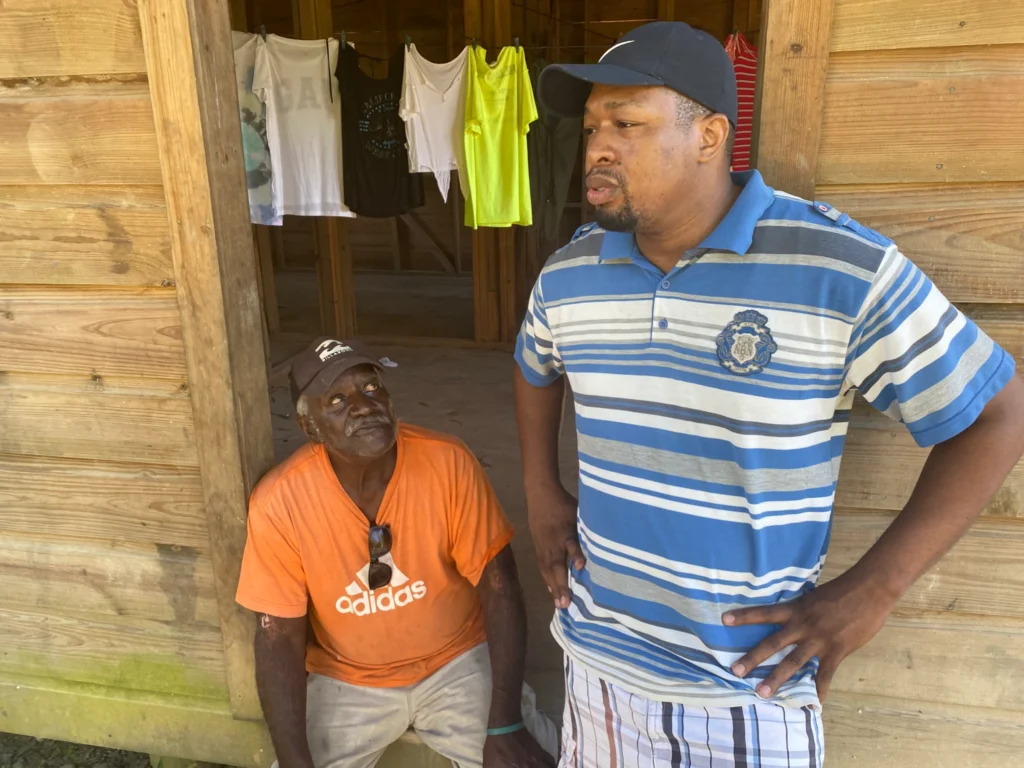Did you know that right behind the tourist machine on the island of Roatan live many people who believe that natural medicine cures most things? Join us on a tour of a village on the edge of the jungle!

The afternoon sun shines in between the treetops. The temperature is around thirty degrees as we park at a full-service manual car wash. A young man comes out of a small “pulperia” with two six-packs of Corona beer and disappears around the corner.
“Go-Pro, start recording”
I check if the voice activation of the head camera works. It acknowledges with a beep.
Steven Raymond shows up and we shake hands. Steven, a waiter from the restaurant at Anthony’s Key Resort agreed to guide us around his neighborhood. Namely a village that consists of four families who have lived here for an average of five generations.
“Are you descended from African slaves?”
“Basically we are, but there is a lot of mixing after the time of slavery,” says Steven, who also mentions immigrants from mainland Honduras, Jamaica, and the Cayman Islands.
We wander down to the beach, passing some ex-pats (immigrants) who are dozing on sun-beds. Buildings, dilapidated, that have been chewed up by the ravages of time are scattered over a larger area. It turns out to have been a hotel. Steven says that one of the buildings later became the “Sand Castle Library” before they moved the library to another location. What is left of the hotel is for sale, but the decay is lowering the price drastically.


A hotel bar and stairs that has seen better days (Photo: Roger Bjoroy-Karlsen)
Four families make up approximately 400 inhabitants in this village, which is located on the south side of the main road.
“What is the name of the village?” I ask, after ordering the Go Pro to stop recording.
“So far it has no name but there is a committee working on giving it the name ‘Ramon Village’, named after the largest family in the area,” says Steven.
He goes on to say that it is peaceful between the families and everyone stands up for each other if needed. The families usually have several houses in the same area. The children who grow up get a plot of land on which they can build a house. Or they take over the house after the older generation has died.
Along the main road, we come to a small sales stall where there are some paintings hanging on the wall outside. Inside, we meet the artist Brittany, who since 2010 has mainly painted motifs with animals and fish from the Caribbean Sea, or of African culture. The latter is strong for most people with ancestors from Africa, they are proud of it, and Brittany’s paintings usually have fresh colors.

We eventually come to a half-finished house which is currently only a drying space for clothes, waiting for the owner to earn more money to complete the construction. In the doorway sits Otis, who is Steven’s grandfather. He is a so-called “bush doctor”, that is a kind of medicine man who brews herbs to relieve or heal various ailments and diseases. Faith in natural medicine is strong in the people and others come from far and wide to get the healing elixir. Otis lists a number of diseases that he can cure and mentions, among other things, diabetes. Since I am diabetic, I ask him to cook something for me. Is it worth a try? He indicates that he has already prepared a product for someone who will arrive a few days later, but that I could buy it and he would make a new one. It looks fine until he comes back with a 2.5 liter can that had “chlorine” on it (!). Which probably means that I should stay far away from this jug. He still gets $20 for it from me. He should be credited for the effort, but I leave the elixir of herbs with a splash of chlorine untested.

The walk continues between the houses and into the jungle and Steven shows us different herbs and plants that are used in natural medicine, whether you have stomach problems or rashes.
At the top of a hill on the east side of the village, we come to the local private school. Inside we meet Deborah Hunnicut from Oklahoma, who is one of the teachers. She has lived on the island for 11 years. I ask if she has a teaching background.

“No, I came to the island and did what God set me to do,” she replies and says that she is very happy to work at the school. Private ownership means that parents and others volunteer when something needs to be repaired or maintained. The pupils sit in booths and receive individual teaching and follow-up. Something that is unique on the island.
“Go Pro, stop recording!”
There is no response from my sweaty forehead. The camera has run out of power somewhere along the way. We thank Steven Raymond for a wonderful trip to a friendly community that lives behind all the white beaches, umbrella drinks, and restaurants. A group of island people who are proud of who they are and where they are from.
If you want to follow us, please subscribe. If you know someone who might be interested, please share!

